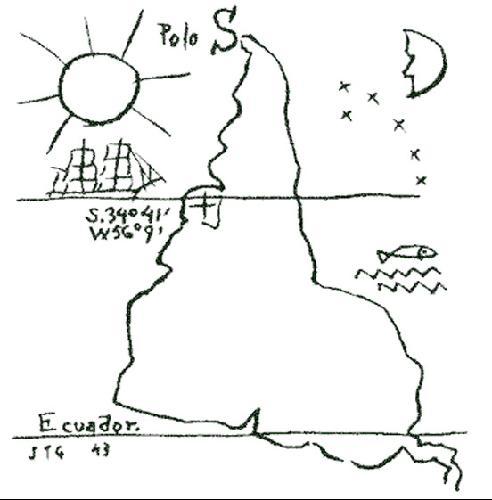Myths of Continents raised the issue of power in relation to the ways in which space is imagined/constructed. In particular, the reading historicizes geographical categories for dividing the world (East, West, Asia, America, Africa, etc…) in order to point out their relative elasticity and how this trait comes to function in relation to (nationalist) ideology. I was particularly interested in the discussion about the exclusion of Latin America from the geographical imaginary of the West: “That Latin American countries are rarely counted as part of the West in contemporary discourse shows the radical extent to which economic and geopolitical indices have displaced the cultural criteria of the original formulation” (53) The exclusion of Latin America from the idea of the West, albeit physically located on the same hemisphere (in the fact the same landmass) as U.S. & Canada, obscures how “this lack of economic development” is highly influenced by the exploitation of Latin American resources by “Western” corporations, the policies of imperialism and neocolonialism practiced by the U.S throughout the Cold War to the present and the colonial past of the Iberian empire (and the neocolonial present/future coming from Xi Jinping’s PRC?). The “displacement” from “cultural to economic and geopolitical indices” not only changes the “geography” of the West but shapes a particular identity and understanding of history that functions ideologically to establish a hierarchy of domination.
With the case of Latin America specifically, the exclusion from the West can also be seen to be working simultaneously with environmental determinism, “the belief that social and cultural differences between human groups can ultimately be traced to differences in their physical environments” (42). The spatializing of social and cultural differences is also a technology of power that has worked to defined Latin America as “exploitable.” The discourse of the “rich, virgin, magical land” and also of the “tropics” comes to define the land as something that is out there, un-peopled and ready for consumption. It is a discourse that turns the tropics into a pornography, thus transforming the people who also live there into expendable and consumable lives, a phenomenon that can be seen with the dispossession of indigenous people from their land by tourism industry, the exploitation of laborers by manufacturing companies and multiple infrastructure projects that are meant for “development.”
Throughout the reading I kept thinking of Joaquin Torres Garcia’s “Inverted Map,” an iconic work that helped Torres Garcia establish the “School of the South” and quite literally put South American art in the global imaginary. By claiming that the “North” is the “South” and turning the map upside-down, Torres Garcia calls out the ideological and social construction of mapping which tends to favor wealthier countries but simultaneously uses its logic to challenge it. The map still retains an environmental determinant logic that assumes that something “good” or “desired” is in the “North,” in this case that something good, that desire, is South America. Thus, in order for South American artistic practice to be “seen,” it has to be in the “North.” He uses the logic of the forces that have deemed the South inferior in order to claim the South for itself. The claiming of the South for “itself,” a claim that can be seen as an articulation of Homi Bhaba’s “a right to difference in equality,” happens through his aesthetic choices. His very rudimentary aesthetic (imitating pre-Columbian aesthetics of indigenous art that he associated with a kind Pre-Columbian/Latin American modernism) helps him challenge the effect of the exclusion of Latin America from the West that the authors pointed out: “by insinuating that their culture is somehow single-handedly responsible for the shape of the modern world, and second, by suggesting that the only way for other peoples of the world to attain economic, political, and even personal success is to abandon their indigenous social and cultural patterns and adopt the cultural forms prevalent in western Europe and the United States” (53). The level of abstraction operating in the very simple lines is Torres Garcia’s way of claiming modernism within a local perspective, a modernism that plays with the logic of environmental determinism in order to undermine it and make a place for the South.
